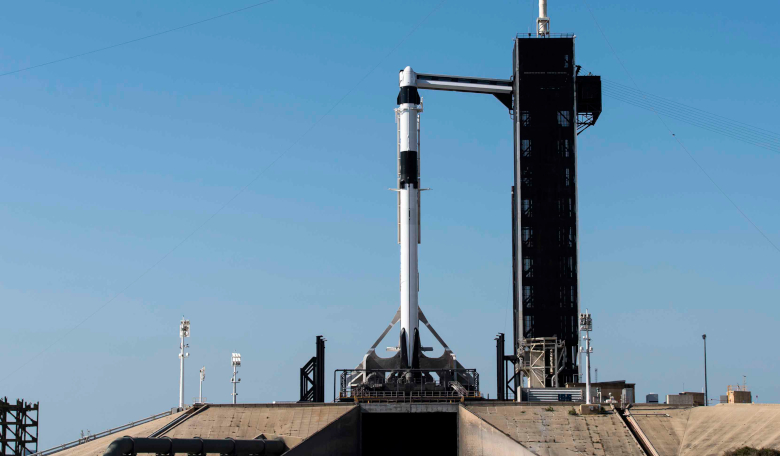The two veteran astronauts suiting up for their first flight in a SpaceX Crew Dragon say they’re both expecting a much different experience from their Space Shuttle missions.
“Of course, years have passed, so we have a much more modern design with the new Dragon vehicle,” said astronaut Robert Behnken, speaking remotely before the US National Space Council on May 19.
“If you look at pictures of the inside of the Space Shuttle, you see a lot of added duct-tape initiatives that were not there when it was originally designed, and many of those ‘features’,” Behnken indicated with air quotes, “that were added have been incorporated directly into the new vehicle, and we’re very appreciative of that.”
The US’s imminent and widely anticipated return of human spaceflight, with the launch of the Crew Dragon capsule, also represents, perhaps more significantly, a set of firsts in commercial space exploration.
The 27 May launch will test the Crew Dragon’s systems, with their touchscreen controls, as the spacecraft navigates to low-Earth orbit while marking the first time a private company sends people there or to the International Space Station (ISS).
It’ll also be the first time astronauts will fly on a private rocket, a SpaceX Falcon 9 currently in position on Launch Pad 39A at Kennedy Space Center in Florida, with the Crew Dragon capsule already alighted on top.
NASA made the milestones possible by deciding to buy human space transportation as a service rather than building a new fleet of government-owned spacecraft like the Space Shuttles. The agency granted SpaceX the go-ahead in 2014 to build this crew-carrying version of the company’s normally crewless Dragons that already visit the ISS to carry cargo back and forth.
NASA helped pay for the capsules that SpaceX will own, a way of attempting to seed this sector of the commercial industry. NASA chose capsule designs from SpaceX and Boeing — Boeing’s CST-100 Starliner — at the time. This Crew Dragon test flight, called Demo-2 and required for NASA’s human certification, is the first time people will travel in either one.
SpaceX ran into trouble during Crew Dragon testing, including a series of failed parachute tests and the fiery disintegration in April 2019 of one Crew Dragon vehicle during a test of the capsule’s launch-abort engines, an escape system not needed on the crewless model. SpaceX attributed the explosion to a leaky valve, then successfully tested the system this January.
Both NASA astronauts served in the US military and are veterans of two Space Shuttle missions each. Behnken was an Air Force flight test engineer. Douglas Hurley was a Marine Corps fighter pilot and test pilot who was part of the last Space Shuttle mission in 2011.
NASA says the duration of the mission is still undetermined and only describes it as the crew’s “extended stay” at the ISS.
At the National Space Council meeting, its chair, US Vice President Mike Pence, quizzed the two astronauts about their forthcoming adventure.
“It’s going to be a great inspiration to the country next week to see the two of you go aloft,” Pence said, “when America will return American astronauts, on American rockets, from American soil, to space.”
When is the SpaceX Dragon launch?
The launch is scheduled for 1633 EDT (2032 GMT) on Wednesday, 27 May, with backup launch windows at 1522 EDT (1922 GMT) on Saturday, 30 May, and 1500 EDT (1900 GMT) on Sunday, 31 May.
Live website coverage is expected to start around four hours prior to launch via spacex.com/launches
If you've enjoyed reading this article, please consider subscribing to ROOM Space Journal to gain immediate and full access to the latest magazine feature articles and receive your own print and/or digital copies of the quarterly ROOM magazine delivered electronically or direct to your door.











